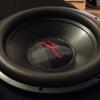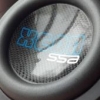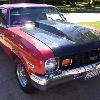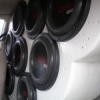Leaderboard
Popular Content
Showing content with the highest reputation on 09/07/2010 in Posts
-
1 pointFound this guide on another forum, and given the slew of recent threads on troubleshooting noise, thought I would post it here. One word of warning is that some HU's and/or processors nowadays have a zero bit mute, which essentially cuts off the output during low signal passages to reduce noise.....so be aware if this is a feature your unit has. Onward to the guide; How can you eliminate alternator whine in a car audio system? If you have alternator whine in a car audio system and want to get rid of it, there is only one sure-fire way to do it. David Navone and Richard Clark from Autosound 2000 in the USA developed the following step-by-step instructions. If you follow the instructions EXACTLY, you are guaranteed to trace and eliminate the noise in your car audio system. Don’t miss a step and don’t assume that something is OK without checking it. Each time you check for noise, you should do it with the engine running at 1500 to 2000 rpm and the headlights on full beam so that the alternator will be charging. The tests with the CD player connected should be done with a ‘zero bit’ track playing and the volume at maximum. Set your CD player to ‘repeat’ if it has that feature. Safety. Make sure when doing noise tests that the parking brake is on and working, and that the vehicle is in neutral or ‘park’. Perform these tests in an area with good ventilation or use an extension hose on the exhaust to route the fumes outside. Step 1. Check the Amplifiers 1a. Unplug the RCA cables from the amplifier/s and mute the signal at the input by using shorting plugs. This will isolate the amplifier from the rest of the car stereo installation. You can make shorting plugs by taking cheap male RCA plugs and soldering the centre and outer terminals together. This shorts out the input of the amplifier/s to ensure that it has zero signal. Has the noise gone? Yes. Go straight to Step 2. Reduce The System. No. Go to 1b. 1b. Disconnect the speakers from the amp and connect a pair of test speakers to it. Make sure the test speakers are not in contact with the car body. The purpose of this step is to ensure proper isolation of the speakers and the speaker leads from the car's chassis. Has the noise gone? Yes. Check speakers, speaker leads and passive crossovers for proper isolation from the car's chassis. Shift passive crossovers to a location away from power cables and the car’s body. No. Go to 1c. 1c. Isolate the amplifier from the chassis of the car. There must not be any electrical contact between the car's chassis and the amplifier, except for the grounding point. Has the noise gone? Yes. Reinstall the amplifier isolated from the chassis of the car. Make sure that the amplifier is grounded in just one point. No. Go to 1d. 1d. Supply the amplifier with an isolated power source, for example an external car battery or a 12-Volt DC power supply. Has the noise gone? Yes. Noise is entering the amplifier via the power supply, try changing the grounding point and add external power supply filtering. Consider changing the amplifier. No. The amplifier has some severe problems, is totally isolated and still noisy. Replace it or have it repaired. That is the end of Step 1. You have now either eliminated the amplifier and speakers as a problem or you have replaced a faulty amplifier. Now you can go on to Step 2. Step 2. Reduce the System. 2a. The amplifier is known to be OK. It is now time to disconnect any signal processors (equaliser, electronic crossover, etc.) and connect the signal from the output of the head unit directly into the input of the amplifier. Has the noise gone? Yes. The noise source must be either one or more of the processors or possibly the signal route. Go to Step 3. ‘Add Signal Processors’. If you didn’t have any signal processors and you are using the signal cable in its normal, installed route then the problem is solved. No. Go to 2b. 2b. Run new signal cables over a new route between the head unit and the amplifier. Has the noise gone? Yes. Permanently route the signal cables in the new route. Go to Step 3. ‘Add Signal Processors’. If you don’t have any signal processors then your problem is solved. No. Go to 2c. 2c. Isolate the case of the head unit from car's chassis. There must not be any electrical contact between the head unit and car chassis except for a single grounding point. Beware of antenna grounds and pullout cases! Has the noise gone? Yes. Reinstall the head unit isolated from the car's chassis and any other metal parts in the dash. Ground the head unit at one point. Go to Step 3. ‘Add Signal Processors’. If you don’t have any signal processors then your problem is solved. No. Go to 2d. 2d. Move the head unit ground to a quieter grounding point. Test a number of points and also try grounding the head unit to the same point as the amplifier. Has the noise gone? Yes. Reinstall the head unit using the quiet grounding point. Go to Step 3. ‘Add Signal Processors’. If you don’t have any signal processors then your problem is solved. No. Go to 2e. 2e. Move the head unit as near to the amplifier as possible. Then connect output of the head unit to the amplifier with the shortest possible RCA cables. Has the noise gone? Yes. Reinstall the head unit one step at a time. Check for noise after each step during the reinstallation. Once you have the head unit installed, noise free go to Step 3. ‘Add Signal Processors’. If you don’t have any signal processors then your problem is solved. No. Go to 2f. 2f. Supply the head unit with an isolated power source, for example an external car battery or a 12 VDC power supply. Make sure that car chassis is not in contact with the head unit. Has the noise gone? Yes. The head unit is sensitive to noise in the supply voltage. Add power supply filtering to the supply voltage for the head unit or use an isolated power supply. You may be better to change the head unit. Once you have a head unit installed noise free, go to Step 3. ‘Add Signal Processors’. If you don’t have any signal processors then your problem is solved. No. There is a serious problem with the head unit. Go to Step 4 'Check the Vehicle' and/or change the head unit. Step 3. Add Signal Processors. At this level the amplifier is known to be good. The car's electrical system is OK and the reinstalled head unit is working fine when connected directly to the amplifier. 3a. Connect one of the Processors back into the signal path. Has the noise gone? Yes. Go to 3a for the next processor. If there are no more processors, the problem is solved. No. Go to 3b. 3b. Run new signal cables over a new route between the Head-unit and processor and between the Processor and the amplifier. Has the noise gone? Yes. Permanently route the cables on the new quiet path. Go to 3a for the next processor. If there are no more processors, the problem is solved. No. Go to 3c. 3c. Isolate the processor from the car's chassis except for a single grounding point. Connect the processor ground to the same grounding point as the head unit. Has the noise gone? Yes. Provide isolation between the Processor and the car's chassis and permanently route the cables on the known quiet path. Go to 3a for the next processor. If there are no more processors, the problem is solved. No. Go to 3d. 3d. Since new cables and re-grounding does not help, it is time to relocate the processor very near the amplifier. Connect the output of the processor to the amplifier with the shortest possible RCA cables. Has the noise gone? Yes. Reinstall the Processor one step at a time. Check for noise after each step in the reinstallation. Be careful when routing the signal cables. Remember that the car's chassis is a conductor. Go to 3a for the next processor. If there are no more processors, the problem is solved. No. Go to 3e. 3e. Power the processor with an isolated power supply. Do not let the processor touch the chassis of the car. Has the noise gone? Yes. The processor’s power supply in not sufficiently isolated from its audio circuitry. Either replace it or consider the permanent installation of an isolated power supply (1:1 DC/DC converter). This type of device provides a permanent power source that is well isolated from the car's chassis. Go to 3a for the next processor. If there are no more processors, the problem is solved. No. Go to 3f. 3f. Physically separate the processor and the isolated power supply from the rest of the system by many metres. Use long signal cables. Has the noise gone? Yes. Something is seriously wrong with either the processor or your install/test procedures. Please repeat this level from the beginning. No. Change Processor -- this one has design problems. Go back to 3a for the new processor. Step 4. Check the Vehicle The suspect car's charging and electrical systems can be checked by using the previously installed sound system in a "known quiet" car. 4a. Connect jumper cables between the batteries of the two vehicles and start the engine of the suspect car. Turn on the headlights on the suspect car and listen to the stereo on the "known quiet" car. Is there now noise in the quiet car’s system? Yes. Have a qualified auto electrician check out the car’s charging system. No. The suspect car's alternator and charging system is now proven to be quiet. The problem must lie in the car stereo installation -- not in the vehicle.
-
1 pointCheck the front bumper on this supra, just happened to click this video and made the connection! @ 0:11 is the best shot
-
1 pointWell today we got a little drive time in. The car did really well. So here are some out of the garage pics. Oh! and as not to show our plate I built a special cover by swiping some of my daughter's sticker letters. LOL! By sefugi at 2010-09-06 By sefugi at 2010-09-06 By sefugi at 2010-09-06 By sefugi at 2010-09-06 By sefugi at 2010-09-06 By sefugi at 2010-09-06 By sefugi at 2010-09-06 By sefugi at 2010-09-06 By sefugi at 2010-09-06 Now we got to get the hood and spoiler clearcoated and we are waiting on the batteries from Kinetiks!!
-
1 point
-
1 point
-
1 point
-
1 point
-
1 point
-
1 point
-
1 pointGto straight from europe..only one in the states sti with a corvette powerplant'
-
1 point
-
1 pointSo your plan was instead to defraud your potential customers by posting pictures of enclosures you didn't build? You obviously have a camera.....you didn't think it was a better plan to just wait to start a thread until you had pictures of better built enclosures that were your own work? I don't like this thread at all. For one, you're trying to generate personal income from this forum without any benefit to the forum itself by means of advertising, becoming a supporting vendor with your own subforum....hell, you're not even a supporting member. And to top it off, your initial business plan was to attempt to defraud everyone by claiming other peoples work as your own in order to generate business. Thread closed. I really don't see the point in allowing this to continue any further.
-
1 point
-
1 pointIt's good to test, but if you want it to really be a valid test between drivers you need to use the same power for all.
-
1 pointWTF? Is it not okay for someone to like something the forum doesn't have a boner for? AM I missing something about fosgate? When did it become cheap flea market crap? Op was pretty specific about what he wants. That is a nice amp op. Good luck with your search.
-
1 pointOk guys i finally got home and started building my box. Good thing too seeing how it will be raining for the next week or so. Anyways I will try to get a video tomorrow. Now on to the pictures. The subs- Starting to cut the MDF ( I used a skill saw with a guide as my table saw sucks!)- Laying out everything for a test fit- Starting to put glue and screws- Counter sunk all the screws and sanded all the imperfections- Finished Product-
-
-1 points
-
-1 pointsI would post this in the Fi forum since Scott is the one who designed these woofers.









